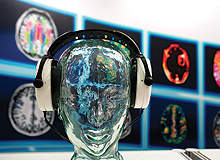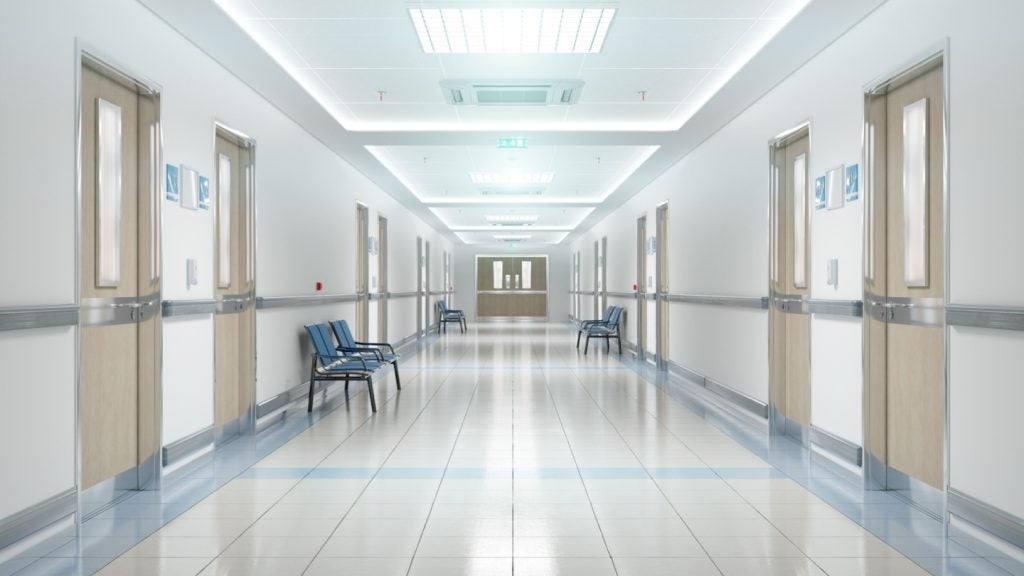
As one of the fastest developing medical disciplines, radiology is no stranger to change. With a large and committed industrial sector making huge investments in technological progress, there are always avenues waiting to provide the next direction for the future of medical imaging, and the pace and quality of modern radiological research means there is always someone, somewhere breaking new ground. One thing that remains unchanged, however, is the simple fact that a visit to the ECR is the best way to catch up with the advances, to take stock of the state of the art, and to peer into the future of radiology.
On 3 March 2011, ECR will open its doors for the 23rd time to provide another expertly assembled programme of scientific and educational sessions, a huge technical exhibition and the usual range of innovative peripheral opportunities and services.
The preliminary programme for ECR 2011 was mailed to 20,000 full members of the European Society of Radiologists (ESR) in June 2010, and the electronic version has been available online for just as long, giving prospective participants plenty of time to become acquainted with the scientific highlights. Among the many New Horizons sessions, state-of-the-art symposia, categorical courses – as well as other course and session types – are several gems that are sure to attract more than their fair share of attention.
Learner’s paradise
Two particular highlights are sure to be the new categorical courses chosen by ECR 2011 Congress President Professor Yves Menu, entitled ‘KISS (Keep It Simple and Straightforward): musculoskeletal MRI’ and ‘CLICK (Clinical Lessons for Imaging Core Knowledge): common clinical cases’.
The former aims to help general radiologists to report on common pathologies seen on everyday musculoskeletal MRI. It offers a range of sessions divided into three lectures covering basic instructions, common pitfalls, and identification and reporting. With seven anatomical areas covered in individual sessions, plus an extra session on the basics of musculoskeletal MRI at 3T, this course represents an excellent opportunity to fill in a few gaps or gain a full grounding in the basics.
The latter, as its title suggests, will focus on the combination of clinical and imaging knowledge, in particular how radiologists should apply clinical know-how to determine whether and how to undertake an imaging exam. Six sessions dealing with common situations will feature speakers focusing on clinical considerations, as well as imaging techniques and typical findings.
How well do you really know your competitors?
Access the most comprehensive Company Profiles on the market, powered by GlobalData. Save hours of research. Gain competitive edge.

Thank you!
Your download email will arrive shortly
Not ready to buy yet? Download a free sample
We are confident about the unique quality of our Company Profiles. However, we want you to make the most beneficial decision for your business, so we offer a free sample that you can download by submitting the below form
By GlobalDataInteractivity is becoming a core feature of ECR sessions and CLICK will be the first categorical course to employ one of the event’s increasingly popular tools, the electronic voting pad. The final speaker of each session will put the audience – and, in a sense, the effectiveness of the forgoing lectures – to the test.
Another new feature at ECR 2011 will be the first ever joint course offered by the ESR and its US counterpart, the Radiological Society of North America (RSNA), reflecting the societies’ increased collective focus on oncologic imaging. The mini course, entitled ‘Essentials in oncologic imaging: what radiologists need to know’ will see renowned speakers from both sides of the Atlantic offering their expertise in a series of 12 lectures focusing on specific cancers.
Another mini course on offer will be ‘The beauty of basic knowledge: interpretation of the chest radiograph’, which aims to remind attendees that despite radiology’s sharp cutting edge, the sub-speciality rests on a foundation of basic science.
A taste of things to come
These courses and sessions are only the tip of the iceberg. ECR 2011 will see the return of many previous popular courses in addition to the significant number of new appearances, including three New Horizons sessions, three state-of-the-art symposia, 14 special focus sessions and 74 refresher courses.
Four professional challenges sessions will be held as part of the programme, two of which will be joint sessions with other societies. ‘Radiology and nuclear medicine: really a joint venture’ will be held in conjunction with the European Association of Nuclear Medicine, while ‘Imaging as the number one tool for oncology trials’ will be presented with the European Organisation for Research and Treatment of Cancer. These courses are another example of the ESR’s drive to work with other organisations to address cancer.
Collaboration is becoming increasingly prevalent at ESR events, and this theme will be repeated in the ESR Meets programme, which in 2011 will see gastroenterology take the role of partner discipline and the United European Gastroenterology Federation joining the congress to present a session entitled ‘Optical and virtual colonography: friends or enemies?’ The session promises to give a valuable insight into the relationship between the techniques from a gastroenterologist’s perspective, looking at the backgrounds and relative merits of the two techniques, and discussing an integrated strategy.
Demonstration time
As well as the scientific and educational programme, the major attraction for many delegates is ECR’s enormous exhibition. A huge range of companies, from the smallest publishers to household names like Siemens, GE Healthcare and Philips, will occupy 26,000m² of exhibition space in Austria Center Vienna for the duration of the congress.
Many of them will be giving live demonstrations, offering an unrivalled opportunity to take a closer look at their products and services, and providing a chance to get the inside word from company representatives. With around 300 companies exhibiting at ECR in recent years, this exhibition has become the best opportunity for a huge proportion of the radiological community to directly contact the industry that drives the speciality forward.
The ESR is lucky enough to benefit from the close involvement of much of the industry, with a growing group of supporting member companies adding quantifiable value to the congress. In addition to their contributions to the technical exhibition, the congress has been augmented by a growing number of industry hands-on workshops and satellite symposia offered by its industry partners.
Many exhibiting companies recognise the need to keep their customers in the know when it comes to imaging technology, and the ECR presents the perfect opportunity to reach large numbers of end users and pass on vital advice on how to make the most of the equipment and products on which they depend. Last year’s sessions were very successful, with every industry hands-on workshop fully booked in advance and all of the satellite symposia attracting packed audiences.
There are limited places available for the industry hands-on workshops, and delegates who pre-register for ECR 2011 can sign up for the sessions in the MyUserArea of the ESR website from mid-January 2011. Although subject to available space on the day, the satellite symposia will be open to any delegates.
Rare experience
There are few chances to immerse oneself in the world of radiology to the extent that the ECR presents. With more than 50,000 members, the ESR has become the world’s largest radiological society, and this base of support has significantly boosted the size and quality of the ECR over the last few years. ECR 2010 saw a record 19,000 delegates taking part in the congress, as well as an unprecedented volume of abstract submissions, with a notable proportion of new attendees and submitters coming from beyond European borders.
ECR 2011 looks set to maintain that standard. With every sub-speciality represented and every stage of development catered for, there is something for everyone.
When you consider that the ESR offers greatly reduced fees for early registration and even provides its own online accommodation booking platform, you are left with very few reasons to miss out. Whether you’re a student considering the speciality, a resident looking to broaden your knowledge or a seasoned radiologist, there will be a huge amount to discover and enjoy at ECR 2011.







